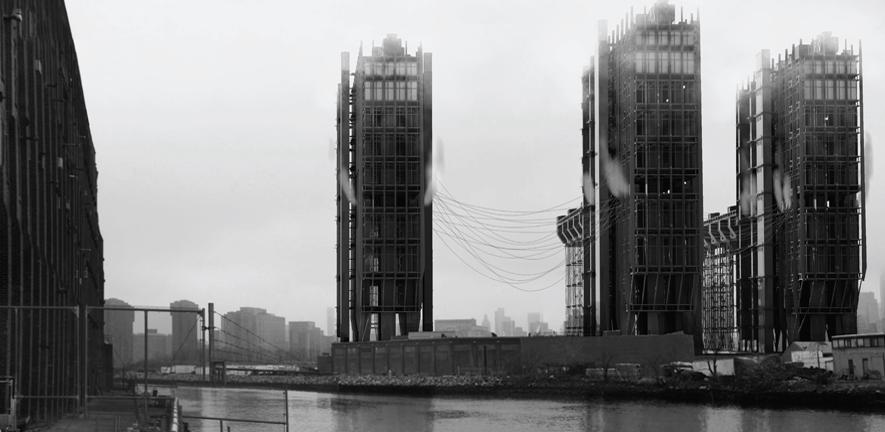
Submitted by M.L. R. Grove on Thu, 27/03/2014 - 10:50
Stuart's entry from the 4th year vertical factory project was recognised out of 525 submissions from 43 countries.
In the past few decades the world economy has seen a global shift of industry and manufacturing eastwards to the emerging markets of China and India purely for economic efficiency and not innovation. The rate at which urban populations are expanding will impact upon how we perceive the strategies of sustaining our cities with regards to supply and demand. The rise of global cargo shipping has seen the ability of local enterprises to move their businesses to areas of low labor costs but sharp rises in oil prices is only enhancing the argument of more localized production.
The population of New York City is expected to grow to 9.4 million people in the next two decades and in addition with a declining manufacturing industry, not aided by recent rezoning, the pressure to support the proposed influx will only grow exponentially with an ever-increasing reliance on imports. Dense cities such as New York, with a substantial inventory of older factory structures have the capability to look at the new innovative and flexible industrial methods to revive manufacturing locally and regionally.
In constrained, urban environments could certain import-reliant industries be designed to act vertically to prevent unnecessary horizontal expanses of manufacturing ultimately as a stimulus for urban and economic growth? How can a paradigmatic architectural approach be adopted to support and promote local and city wide manufacturing as a precedent for a new industrial urbanism.
The project aims to investigate, in a world of free trade and rapid globalization, the possibility of flexible alternatives to inefficient industrial sprawl by considering the prospect of vertical manufacturing towers.
Vertiginous manufacturing structures would be proposed in former areas of prominent industrial activity; where struggling businesses are being forced further away from their consumers due to higher rents and potential re-zoning uncertainty – Williamsburg, Long Island City, Newtown Creek and Red Hook amongst others. The manufacturing hubs would intend to act as a physical socio-political barrier to counter-act the adverse affects of the current administration’s inadequate industrial assistance and the onset of encroaching residential and commercial developments in nearby Long Island City and Williamsburg.
Three 158m high towers perched on the Newtown Creek peninsula in Queens aim to create a new paradigmatic urbanism within the eclectic idiosyncrasy of the city. The repeatable industrial cluster provides a range of flexible manufacturing spaces that can accommodate small/ large-scale industries, be they labor intensive or entirely mechanical, that would choose to locate in inner city New York. A vertical assembly line running up the south of each tower accommodates large mechanical industries that would otherwise have a huge footprint. An exterior mega structural frame, variable large floor to ceiling heights and exterior structural lift cores allow for maximum spatial allowance and adaptability. A reintroduction of the iconic finger pier has been utilized in order to re-establish alternate distribution methods that have become uncommon in the city with 90m high projections into the East River to enable waterborne traffic to once again freely interact directly with a large agglomeration of manufacturers on a small footprint in the heart of the city.
With an average of 10 floors, each tower has 70,000 sqft of rentable space in each tower with the potential for over 1000 employees or the equivalent of 40 local businesses. Over 3000 jobs/ 120 manufacturers can be accommodated through the development of each manufacturing node.
To find out more about the competition click here.
